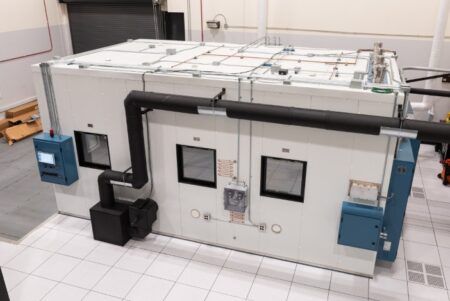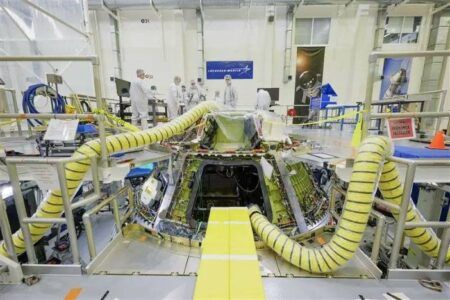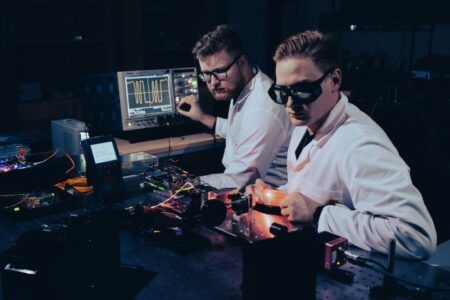Duplicates of optical components to be used in NASA’s James Webb Space Telescope (JWST) have completed their first tests to ensure they can function in the cold of space.
“This test is the first dry-run of the equipment and procedures we will use to conduct an end-to-end optical test of the flight telescope and instruments,” said Mark Clampin, observatory project scientist at NASA’s Goddard Space Flight Center. “It provides confidence that once the flight telescope is ready, we are fully prepared for a successful test of the flight hardware.”
Called Pathfinder, the test device is a non-flight replica of the JWST’s center section backplane, a large IR imaging device that will launch in 2018.
The flight backplane comes in three segments: a center section and two wing-like parts, all of which will support large hexagonal mirrors on the JWST. The Pathfinder only consists of the center part of the backplane. However, during the test, it held two full-size spare primary mirror segments and a full-size spare secondary mirror to demonstrate its ability to optically test and align the telescope at the planned operating temperatures of –400F [-204C].
Engineers are testing the non-flight equipment to ensure that tests on the JWST go “safely and according to plan.”
“The most significant breakthrough was the first-ever cryogenic optical alignment and testing of multiple primary mirror segments in a process known as phasing,” said Lee Feinberg, JWST’s optical telescope element manager. “During the demonstration, mirrors that were initially misaligned by millimeters were aligned to each other using actuators operating at –400F [-204C] to better than 1/1000 diameter of a human hair, or a fraction of a wavelength of light, such that the two primary mirror segments were optically equivalent to a single monolithic mirror.”
The phasing demonstration used a multiwavelength interferometer by 4D Technologies Corp to test segmented telescopes and a reflective null lens designed and built by Harris Corp.
Mirror alignment was also tested using photogrammetry, a technique that takes images from multiple angles, combines those images and uses triangulation algorithms to determine distances between objects.
This assessment was also the first time a lightweight cryogenic mirror of this type had been tested in a second gravity orientation, allowing for successful cross-checking of the predicted zero-gravity performance of the mirrors.
Meanwhile JWST’s aft optics system, which includes the tertiary mirror and fine steering mirror, was installed on Pathfinder to prepare for a second test, which will be completed later this year. The full Pathfinder was outfitted with special fiber-fed IR optical sources that simulate star images. Those star images, along with an IR detector, will be used during the second test to perform end-to-end testing of the full Pathfinder telescope system and ensure their function as simulated stars.
The third and final test will follow in 2016 and will fully test all the equipment needed to simulate the temperature environment of space. Once this is complete, all test equipment and procedures needed to test JWST and the integrated science instrument module will be complete.
JWST is the scientific successor to NASA’s Hubble Space Telescope, with its development led by NASA, the European Space Agency and the Canadian Space Agency.
According to NASA, JWST will be the premier observatory of the next decade, serving thousands of astronomers worldwide. It will study every phase in the history of the universe, ranging from the first luminous glows after the Big Bang, to the formation of solar systems capable of supporting life on planets like Earth, to the evolution of the solar system.
October 22, 2015




